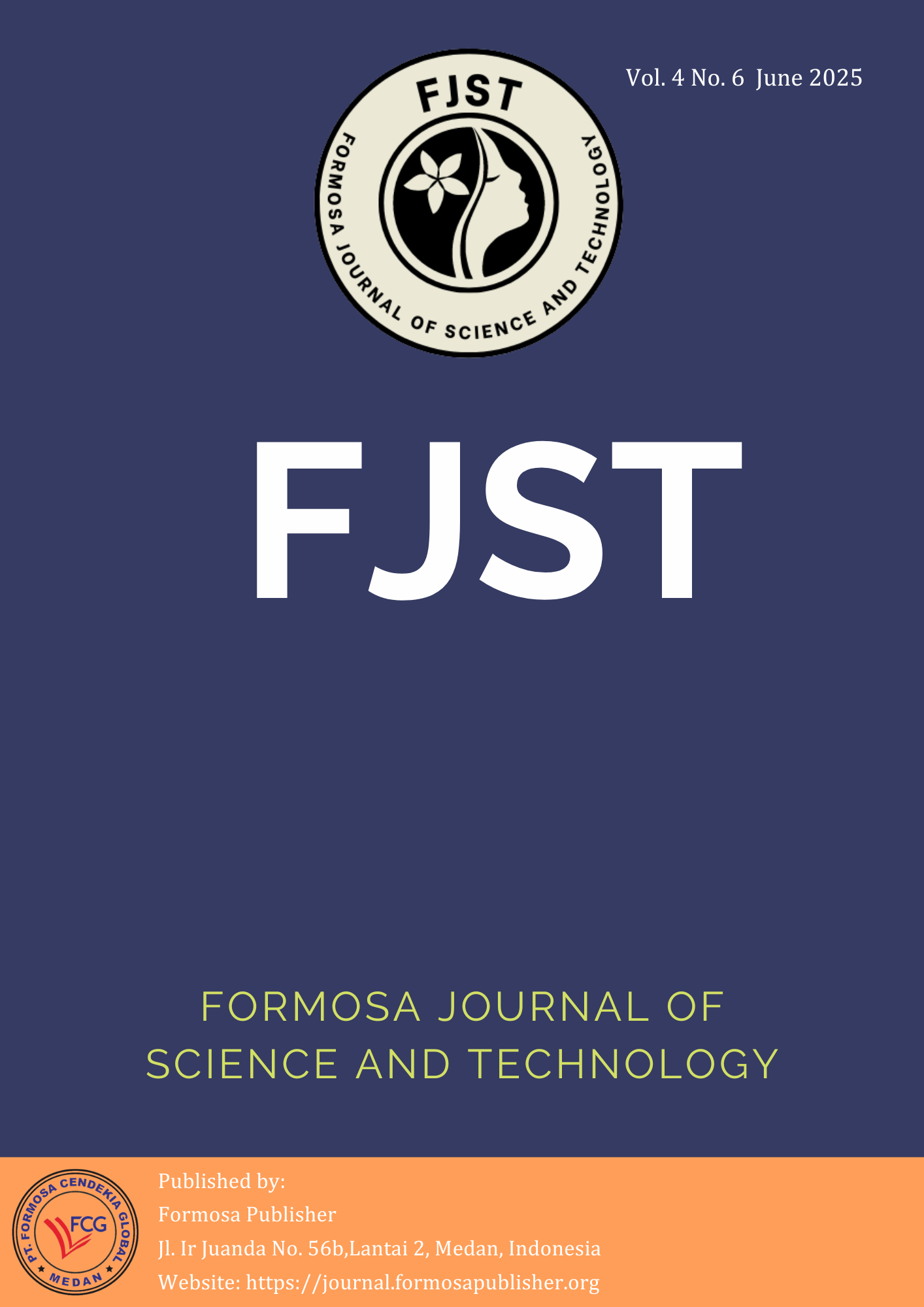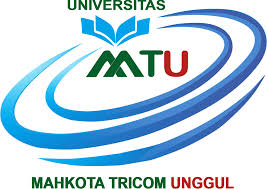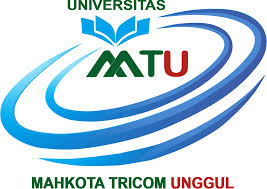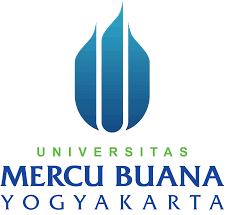Evaluation of Physical Properties of Dry Sausage Made from Cull Laying Hen Meat Stored at Room Temperature
DOI:
https://doi.org/10.55927/fjst.v4i6.127Keywords:
Dry Sausage, Physical Quality, Cull Laying HenAbstract
This research aims to determine the physical quality of dry sausage products from cull laying hens stored at different times. The materials used in this study are meat from culling layer hens and the seasonings for sausage production. The research uses a completely randomized design (CRD) with 4 treatments and 4 replications. The treatments in this study are P0 = day one with no storage, P1 = 7 days of storage, P2 = 14 days of storage, P3 = 21 days of storage, all stored at room temperature. The variables measured in this study include physical properties such as water activity, moisture content, water-holding capacity, and pH. Data analysis was performed using variance analysis followed by Duncan's test for mean differences. The results of the analysis of variance for water activity showed that the storage duration of dry sausage made from culling hen meat had a significant effect on water activity values (P<0.05). The moisture showed that the storage duration had a significant effect on moisture content values (P<0.05). The water-holding capacity indicated that the storage duration significantly affected water-holding capacity values (P<0.05). The pH values indicated that the storage duration of dry sausage made from culling hen meat significantly affected pH values (P<0.05). Based on the results of this study, it can be concluded that dry sausage made from culling layer hen meat stored at room temperature is still suitable for consumption up to the 21st day of storage.
References
Afif, T.M., 2013. Pengaruh Lama Penyimpanan sosis dengan Coating Edible Film Gelatin Kulit Shank Ayam Broiler Terhadap Cemaran Mikroba, Skripsi, Universitas Sebelas Maret, Surakarta.
Afrila, A., dan F. Jaya. 2012. Keempukkan, pH dan aktivitas air (Aw) dendeng sapi pada berbagai konsentrasi ekstrak jahe (Zingiber officinale roscoe) dan lama perendaman yang berbeda. Jumal Ilmu Dan Teknologi Hasil Ternak. 7(2) : 6 - 12.
Ali, M.S., G.D.Kim, H.W. Seo, E.Y. Jung, B.W. Kim, H.S. Yang, dan S.T. Joo. 2011. Possibility of making lowfat sausages from duck meat with addition of rice flour. Asian Aust. J. Anim. Sci. 24(3): 421-428.
Anggraeni, D.A., S.B. Widjanarko, D.W. Ningtyas. 2014. Proporsi tepung porang (Amorphophallus muelleri blume): Tepung maizena terhadap karakteristik sosis ayam. Jurnal Pangan dan Agroindustri, 2(3):214- 223.
Badan Pusat Statistik (BPS). 2021.Statistik Peternakan. Jakarta: BPS
Badan Pusat Statistik (BPS). 2022. Statistik Konsumsi Makanan. Jakarta: BPS.
Badan Standar Nasional. 2015. Sosis Daging. SNI 01-3820.2015. Departemen Perindustrian, Jakarta.
Bulkaini, B., D. Kisworo, S. Sukirno, R. Wulandani, and M. Maskur. 2020. Kualitas sosis daging ayam dengan penambahan tepung tapioka. Jurnal Ilmu dan Teknologi Peternakan Indonesia (JITPI), 6(1): 10-15.
Coşkuner, Ö., A.H. Ertaş, and A. Soyer. 2010. The effect of processing method and storage time on constituents of Turkish sausages (sucuk). Journal of food processing and preservation, 34, 125-135.
Deumier, F., and A. Collignan. 2003. The effects of sodium lactate and starter cultures on pH, lactic acid bacteria, Listeria monocytogenes and Salmonella spp. levels in pure chicken dry fermented sausage. Meat Science, 65(3), 1165-1174.
Kameník, J., A. Saláková, G. Bořilová, Z. Pavlík, E. Standarová, and L. Steinhauser. 2021. Effects of storage temperature on the quality of dry fermented Sausages polican. Czech Journal of Food Sciences, 30(4), 293-301.
Kusnandar, F., D.R. Adawiyah, and M. Fitria. 2010. Pendugaan umur simpan produk biskuit dengan metode akselerasi berdasarkan pendekatan kadar air kritis. Jurnal Teknologi dan Industri Pangan. 21(2), 97-104.
Lalu, I.M.W., G.E.M. Malelak, and G.M. Sipahelut. 2019. Uji kualitas sosis darah tradisional (ta’bu) yang diberi tambahan tepung beras hitam (Oriza sativa L. Indica)(The quality of traditional blood suasage (ta’bu) added black rice (oriza sativa l. Indica) flour). Jurnal Nukleus Peternakan. 6(2), 71-79.
Lawrie, R.A. 2003. Ilmu Daging. Diterjemahkan oleh Aminuddin Parakkasi. UI- Press. Jakarta. Hal 245-298.
Nurlaila, N., A. Sukainah, and A. Amiruddin. 2018. Pengembangan produk sosis fungsional berbahan dasar ikan tenggiri dan tepung daun kelor. Jurnal Pendidikan Teknologi Pertanian. 2(2):105–113.
Ojha, K.S., J.P. Kerry, G. Duffy, T. Beresford, and B.K. Tiwari. 2015. Technological advances for enhancing quality and safety of fermented meat products. Trends in Food Science & Technology, 44(1), 105-116.
Prihharsanti, A.H.T. 2009. Populasi bakteri dan jamur pada daging sapi dengan penyimpanan suhu rendah. Jurnal Sains Peternakan, 7 (2), 66-72.
Soeparno. 2009. Ilmu dan Teknologi Daging. Gadjah Mada University Press. Yogyakarta.
Suharyanto, S., A.H.K. Amrullah, and A. Harahap. 2023. Menekan oksidasi sosis daging sapi yang disimpan pada suhu ruang dengan penambahan ekstrak daun senduduk (Melastoma malabathricum L.). Jurnal Agripet. 23(2), 134-141
Tapia, M.S., S.M. Alzamora, and J. Chirife. 2020. Effects of water activity (Aw) on microbial stability as a hurdle in food preservation. Water activity in foods: Fundamentals and applications, 323-355.
Downloads
Published
Issue
Section
License
Copyright (c) 2025 Stevano D. Dehe, Erwin H.B. Sondakh, Jerry A.D. Kalele, Delly B. Rumondor

This work is licensed under a Creative Commons Attribution 4.0 International License.


































